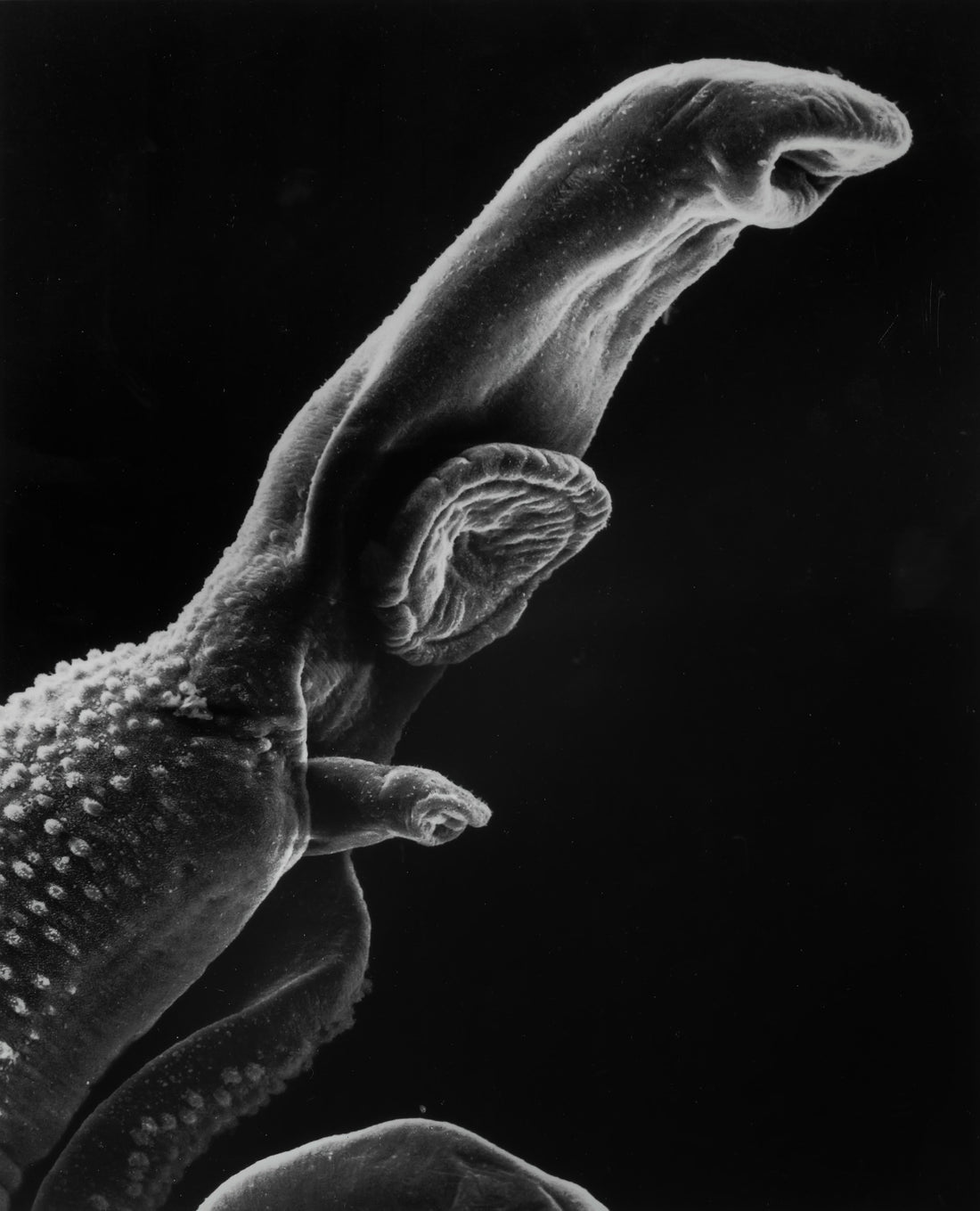How we get parasites
While it's a common belief that parasites (organisms that rely on their hosts for food and survival) are only a 2nd and 3rd world problem, the reality is that parasites are everywhere, and can be picked up in a number of different ways, including:
- drinking water (modern water treatment does not reduce risk)
- breathing air
- swimming in lakes, rivers, or oceans
- eating fish (raw or under-cooked)
- eating meat
- eating vegetables (due to fertilizer from animal manure)
- walking barefoot in the grass, sand, snow, etc
- having pets
The problem with parasite overload
Our ancestors commonly ate foods and herbs with the intent to kill parasites, and did so on a regular schedule (1-2 times a year). In recent history, modernized countries have abandoned this tradition, although animals are still given anti-parasitic medication.
Before modern toxicities, herbs and food were typically enough to keep parasites under control in the body, as a healthy immune system is able to tackle them. However, due to an unprecedented level of heavy metals, poor nutrition, pollution, and other toxins, we have created an environment in the body that is too friendly to parasites, making it much more difficult for the body to deal with them.
symptoms of parasites
The list of symptoms possible in the presence of parasites is very long, as parasites can be attributed to any number of diseases, but some of the most common signs are:
- headaces and/or migraines
- brain fog
- chronic fatigue
- joint pain
- rashes and/or hives
- teeth grinding
parasites & other illnesses
Parasites exist not only in the gut, but systemically as well. This means that they can thrive in organs like our lungs, brain, liver, skin, and more.
Parasites are also excellent at holding onto heavy metals, viruses, mold, environmental toxins, etc, meaning they can cause a wide variety of health issues. Viruses have particular affinity for parasites, and will go to hide inside the parasite so the body won't detect it and send immune cells after it.
Case study example: A tumor patient was found to have a sac of parasites in the brain. What happens in this type of case is that the body identifies a foreign object (a parasite), and sends an immune response to essentially "wall off" the invader with tissue to protect the organ. This forms a tumor like structure in the body, which is now prone to mutation (cancer) due to the toxicities existing inside of it.
treating parasites
There are many ways to go about addressing parasites, both traditional and modern methods, but first we have to know how they operate.
Parasites tend to have cycles based on our circadian rythym due to the rise and fall of various hormones. These hormonal cycles tend to coincide with moon cycles, as the two are synchronized. This allows us to more efficiently time when to address parasites instead of keeping track of our hormonal changes.
During the full moon, melatonin levels tend to drop. Melatonin supports our sleep and immune function, so when this is decreased, parasites have an easier time wrecking havoc on the body, and you may notice an increase in symptoms around this time.
Simultaneously, our seratonin levels rise around this time. Parasites like seratonin and use it as a food source to move around more freely in the body, reproduce, and communicate. They're also able to more easily form biofilm in the body, further damaging the immune system and making it harder to eradicate them.
The most important thing to consider when doing any kind of parasite cleanse, whether traditonal or modern, is that the drainage pathways must be open. This is critical as closed or sluggish drainage pathways will cause the parasite to not be able to leave the body properly, and lead to the body re-absorbing the toxins that reside in the worm.
The second most important factor in a parasite cleanse is to use a mechanism that removes the whole parasite from the body. If the parasite is killed and left inside the body, it creates a huge burden for the body to now have to produce enzymes to break down the debris and remove all of the toxins that come with it. Because heavy metals cannot be broken down, they end up being re-absorbed. A great natural way to capture the entire worm is to use mimosa pudica seed, which turns into a thick, viscous gel that traps the worm inside of it and guides it out of the body.
Another important thing to note is that treating parasites is often the best first step regardless of illness or diagnoses. Because parasites hold onto so many other things like heavy metals, bacteria, viruses, mold, and more, treating parasites alone can often reduce symptoms, especially for those with chronic illnesses. Removing excess critters can then do a few things:
- Allow the body to bring itself back into homeostasis and resolve remaining issues, since it now has more capacity to do so without parasitic infection
- Create a less hospitable environment
Creating diet and lifestyle changes is critical to ensure that the body becomes a less hospitable environment for future parasites. This includes a healthy diet, daily movement, and plenty of hydration.

